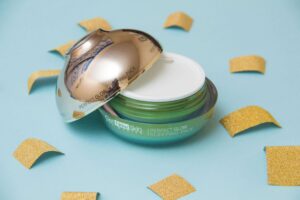The Ethical Consumer

In an era where consumers are increasingly conscious of the ethical implications of their choices, supporting cruelty-free brands has become a powerful way to make a positive impact. Cruelty-free beauty not only aligns with ethical values but also contributes to the larger movement towards compassionate and sustainable practices. In this beauty blog, we’ll explore the significance of being an ethical consumer and provide actionable tips on how to support cruelty-free brands in the beauty industry.
Understanding Cruelty-Free Beauty
1. What Does Cruelty-Free Mean?
Cruelty-free beauty denotes products and brands that abstain from conducting animal testing at any stage of product development. This commitment extends beyond the finished product, encompassing individual ingredients and formulations.
2. The Importance of Being Cruelty-Free:
Supporting cruelty-free brands is a stance against animal cruelty and promotes ethical practices within the beauty industry. Cruelty-free options are not only kinder to animals but also align with a growing awareness of the environmental and health implications of animal testing.
Identifying Cruelty-Free Brands
1. Leaping Bunny Certification:
The Leaping Bunny logo is one of the most recognized cruelty-free certifications. Brands with this logo undergo a thorough audit to ensure they adhere to strict cruelty-free standards.
2. PETA’s Beauty Without Bunnies:
PETA’s Beauty Without Bunnies program provides a comprehensive list of cruelty-free brands. Brands featured on PETA’s list pledge not to conduct, commission, or pay for animal testing.
3. Cruelty-Free Icons and Logos:
Look for cruelty-free icons on product packaging, often accompanied by phrases like “Not Tested on Animals” or “Cruelty-Free.” These visual cues make it easier for consumers to identify ethical brands.
Tips for Supporting Cruelty-Free Brands
1. Educate Yourself:
Stay informed about cruelty-free beauty by researching brands and certifications. Follow blogs, social media accounts, and organizations dedicated to cruelty-free practices to stay updated on the latest developments.
2. Explore Cruelty-Free Lists:
Refer to cruelty-free lists provided by organizations like Leaping Bunny and PETA. These lists are valuable resources that compile brands committed to cruelty-free practices.
3. Check Product Packaging:
Examine product packaging for cruelty-free logos and certifications. Many brands proudly display these symbols, making it easier for consumers to make ethical choices while shopping.
4. Engage with Brands:
Support and engage with cruelty-free brands on social media platforms. Expressing your commitment to ethical beauty and sharing your experiences can encourage brands to maintain or adopt cruelty-free practices.
5. Shop Ethical Retailers:
Choose to shop at retailers that prioritize cruelty-free products. Many beauty retailers now have dedicated sections or labels for cruelty-free and vegan beauty, simplifying the shopping experience for ethical consumers.
Common Cruelty-Free Misconceptions
1. Cruelty-Free Does Not Mean Low Quality:
Some consumers may associate cruelty-free products with being less effective or luxurious. However, many cruelty-free brands offer high-quality, innovative products that rival or surpass non-cruelty-free counterparts.
2. Accessibility of Cruelty-Free Products:
The misconception that cruelty-free options are scarce is outdated. With the rising demand for ethical beauty, an increasing number of brands are choosing cruelty-free practices, providing consumers with a diverse array of choices.
3. Cruelty-Free and Vegan Distinctions:
While cruelty-free products do not involve animal testing, they may still contain animal-derived ingredients. Vegan products, on the other hand, exclude all animal-derived components. Understanding these distinctions allows consumers to align their choices with specific ethical values.

Advocacy Beyond Personal Choices
1. Educate Friends and Family:
Share your knowledge of cruelty-free beauty with friends and family. Encourage them to make informed choices and explain the positive impact that cruelty-free practices have on animals and the environment.
2. Support Legislative Initiatives:
Advocate for stricter regulations against animal testing in the beauty industry. Stay informed about legislative initiatives aimed at promoting cruelty-free practices and lend your voice to support these causes.
3. Participate in Cruelty-Free Campaigns:
Join or support campaigns organized by animal rights and cruelty-free organizations. Participating in events, signing petitions, and raising awareness contribute to the collective effort towards a cruelty-free future.
Being an ethical consumer is more than a trend; it’s a conscious decision to make choices that align with personal values and contribute to positive change. Supporting cruelty-free brands in the beauty industry is a powerful way to advocate for ethical practices and ensure a brighter, more compassionate future for both consumers and the animal kingdom. By educating ourselves, making informed choices, and spreading awareness, we can collectively shape a beauty industry that prioritizes compassion, kindness, and ethical values. Let ethical beauty be not just a choice but a lifestyle that reflects our commitment to a more humane world.

